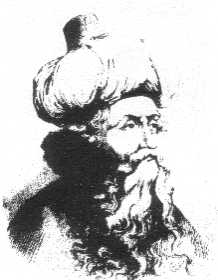Ibn ul-Arabi facts for kids
Mohye-ed-din Ibn ul-Arabī (Arabic: ابن عربي) was an important Arab Sufi mystic, poet, and philosopher. He was born on July 28, 1165, and passed away on November 10, 1240. People in the Muslim world often call him Sheikh ul Akbar, which means "The Greatest Sheikh." He is famous for explaining the idea of Tawhid (the Oneness of God) through a concept called Wahdat ul Wajood (the Oneness of Being). This idea suggests that everything in existence is connected and comes from God.
Contents
Early Life and Travels
Ibn Arabi was born in a city called Murcia in what is now Spain. When he was a child, his family moved to Seville. Even though he lived in Spain, he traveled a lot. He often visited North Africa.
Journeys Across the Muslim World
In 1202, Ibn Arabi went on a special journey called a Hajj to Mecca. A Hajj is a pilgrimage, a religious trip that Muslims make to Mecca. He stayed in Mecca for three years. After that, he traveled to many other places. He visited countries like Syria, Iraq, Turkey, and Palestine. Eventually, he settled down in Damascus, where he lived until he passed away in 1240.
His Major Work
Ibn Arabi wrote many books, but his most famous one is called The Meccan Revelations. In Arabic, its name is Al-Futuhat al-Makkiyya.
What the Book is About
This very long book has 560 chapters! In The Meccan Revelations, Ibn Arabi wrote about many deep topics. He explored ideas about the universe (called cosmology), the nature of reality (called metaphysics), and different aspects of religion and Islam. His writings have influenced many thinkers and scholars over the centuries.


